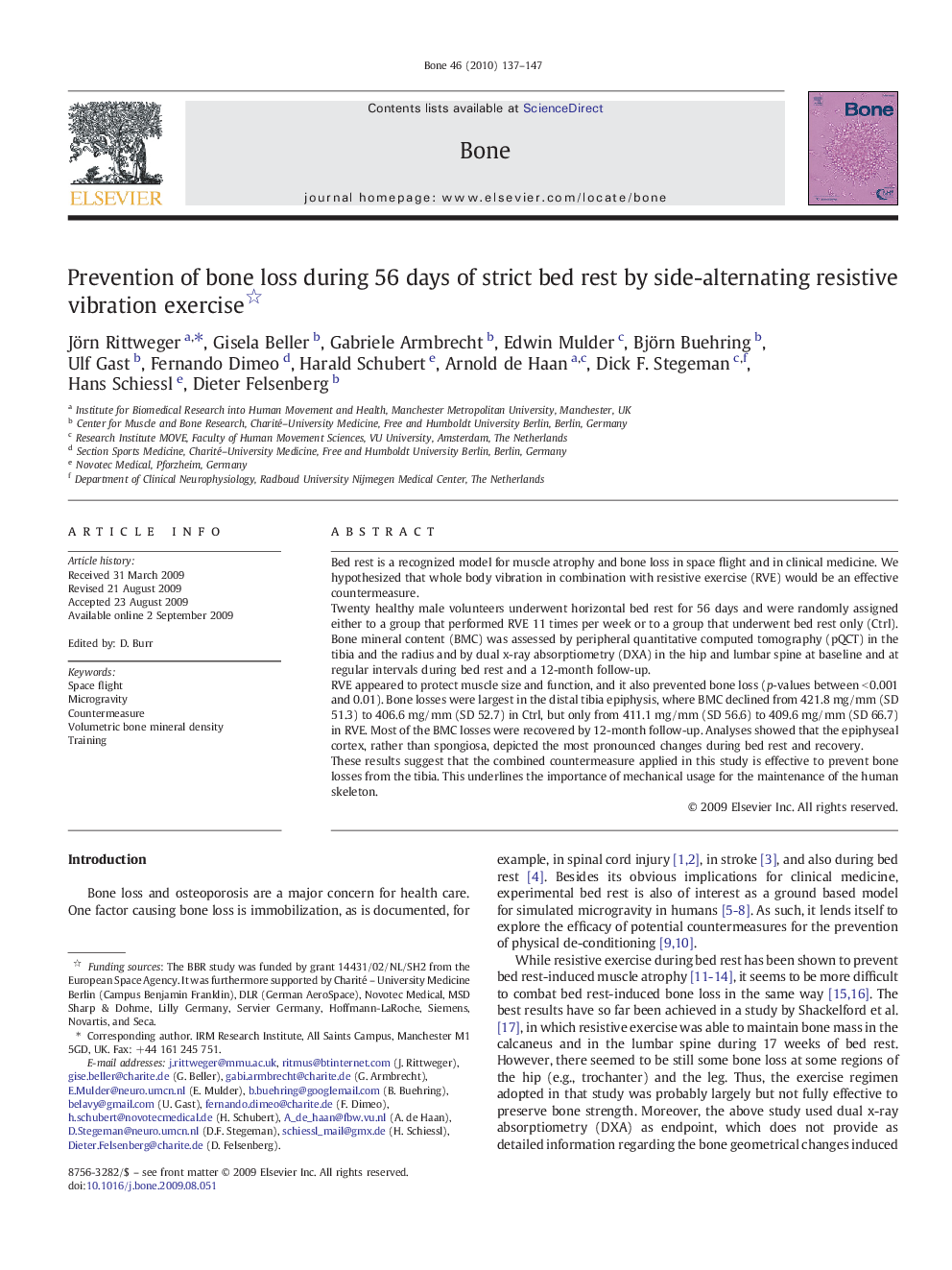| Article ID | Journal | Published Year | Pages | File Type |
|---|---|---|---|---|
| 2780224 | Bone | 2010 | 11 Pages |
Bed rest is a recognized model for muscle atrophy and bone loss in space flight and in clinical medicine. We hypothesized that whole body vibration in combination with resistive exercise (RVE) would be an effective countermeasure.Twenty healthy male volunteers underwent horizontal bed rest for 56 days and were randomly assigned either to a group that performed RVE 11 times per week or to a group that underwent bed rest only (Ctrl). Bone mineral content (BMC) was assessed by peripheral quantitative computed tomography (pQCT) in the tibia and the radius and by dual x-ray absorptiometry (DXA) in the hip and lumbar spine at baseline and at regular intervals during bed rest and a 12-month follow-up.RVE appeared to protect muscle size and function, and it also prevented bone loss (p-values between < 0.001 and 0.01). Bone losses were largest in the distal tibia epiphysis, where BMC declined from 421.8 mg/mm (SD 51.3) to 406.6 mg/mm (SD 52.7) in Ctrl, but only from 411.1 mg/mm (SD 56.6) to 409.6 mg/mm (SD 66.7) in RVE. Most of the BMC losses were recovered by 12-month follow-up. Analyses showed that the epiphyseal cortex, rather than spongiosa, depicted the most pronounced changes during bed rest and recovery.These results suggest that the combined countermeasure applied in this study is effective to prevent bone losses from the tibia. This underlines the importance of mechanical usage for the maintenance of the human skeleton.
